What is this disease, osteochondrosis?The definition of the disease can be referred to as a degenerative cartilage lesion in the intervertebral discs with a more extension on the bone.The causes of osteochondrosis are completely varied, but most often they become injuries, a still lifestyle, work in one position.However, osteochondrosis of nervous causes is not excluded.
The insidiousness of the disease is that it can occur in any part of the motor system of the human body and its provocateur can be neurosis.People have different forms of osteochondrosis of the spine.In general, in medicine, this term is customary to mean a set of dystrophic degenerative processes that are located in the intervertebral discs, as well as the small joints of the spine and the vertebrae themselves.
Osteochondrosis: What is it?Types of osteochondrosis
What is osteochondrosis?- The following types of osteochondrosis are distinguished in medical science:
- cervical;
- current;
- Lumbar.
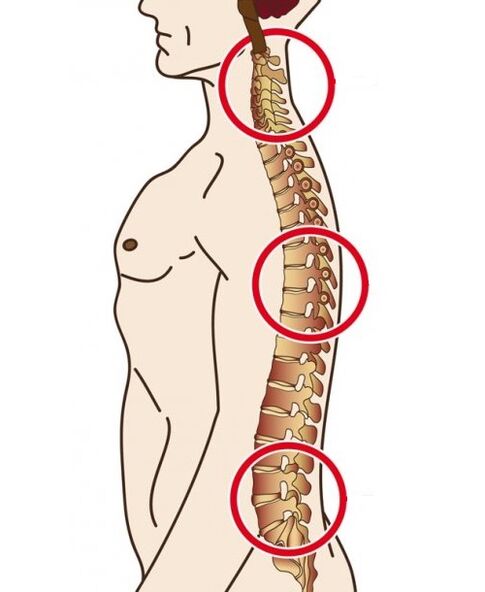
The name of the disease depends on the location of the pathological processes.
In general, osteochondrosis was suffered by elderly people.But in recent decades, the incidence has been increasingly found in people at a young age.
Why does osteochondrosis occur in young?This is mainly due to the fact that children do not receive appropriate physical fitness.Also, the causes of osteochondrosis can be explained by excess body weight, which is often observed in adolescents.Statistics say that today every eighth person has back disease.
A big problem is that many children spend all their time sitting on the computer, playing stationary video games.In addition, many professions today are related to stuck work.And this invariably affects the posture, weakens the muscles, which leads to other negative effects.In fact, lifestyle, limited in movement and physical activity, is a direct path to the back of diseases.
How is osteochondrosis manifesting?
There are unique ones that claim that osteochondrosis does not exist.But at the same time, it is worth understanding that such pathology is associated with a disorder of the trophism of the intervertebral discs, which inevitably leads to deformation of the tissues.This fact cannot be denied in any way.Therefore, ignoring the disease and even more so to say that it does not exist is obvious nonsense.
What is osteochondrosis?This is when the discs lose their mobility because of degeneration.At the same time, the gaps between the vertebrae are reduced and this segment begins to lose the stability that osteochondrosis occurs.The change in the distance between the vertebrae causes the nerve endings to pinch.As a result, this affects the tension of the posterior muscles.Subsequently, pain begins to occur, against the background of which neurosis occurs.
Changes in dystrophic nature in osteochondrosis discs weaken the outer fibrous ring.In this regard, patients may occur in convexity and hernia.In addition, the destructive progression of the disease passes to the joints, the intervertebral ligaments, which leads to the formation of bone growth on the vertebrae.
Osteochondrosis may contribute to the fact that the patient will have difficulty bending the body, which is associated with the loss of elasticity of the spine.This is where the vertebrae arises, along with pathological deformities of the affected areas in the spine.All this leads to the fact that one develops chronic osteochondrosis.

Erosive osteochondrosis
Sometimes patients have a rapid treatment of damage to the intervertebral discs, which is determined by erosive osteochondrosis.This form of the disease is characterized by much more pronounced symptoms, while the patient often has a suspicion of spondylodiscitis.The main criterion for diagnosing erosive osteochondrosis is the preservation of sclerosis end plates, which can only be traced using X -ray or CT.
Osteochondrosis: Symptoms and causal relationship
Spinal osteochondrosis occurs for the following reasons:
- excessive spinal loads;
- overweight;
- Hard physical work;
- Stuck or standing work;
- using uncomfortable shoes;
- Improper posture;
- A fixed lifestyle;
- genetic and acquired deformities in the spine;
- flat legs;
- genetic predisposition;
- metabolic disorders;
- intoxication of the body;
- nervous overvoltage;
- stressful situations;
- severe somatic diseases;
- hormonal disorders;
- autoimmune diseases;
- injuries transferred to the spine;
- diet with deficiency of minerals and vitamins;
- habit that is harmful to health;
- Using uncomfortable sleeping accessories for night break.
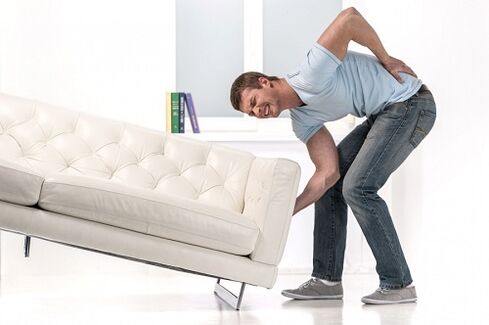
It is impossible not to say that professional athletes can also be subjected to increased loads of the spine, which, of course, can lead to the development of back diseases.In addition, they should not sharply limit their number of training, since it is during this period that the risk of osteochondrosis is the largest.
Osteochondrosis is basically a glorious disease.Patients constantly feel the periods of exacerbation of the disease and remission.Increasing physical activity, overworking, and hypothermia can lead to intense pain.
If we are talking about the lesions of the cervical spine, it is worth noting that patients experience neck pain, upper limbs, which can be accompanied by stiffness in movement, numbness of the fingers and headaches.At the same time, spinal artery pinches can be observed, leading to an increase in blood pressure, a deficiency of oxygen intake to the brain.
With thoracic osteochondrosis, the patient may feel sick or, on the contrary, acute pain that can be expressed as a "back bet".Pain syndrome can be felt in the heart and lungs and other organs, the patient can also have difficulty breathing, in addition, sometimes a poor and severe right -wing rooster syndrome is diagnosed.
The gastric form of osteochondrosis of the chest area is accompanied by cardiac syndrome when the patient experiences stiffness in the chest, lungs and heart.In this case, the pain syndrome can be increased during deep breathing.With the more increasing development of gastralgic syndrome, the pain moves to the stomach, which is filled with the development of gastritis.
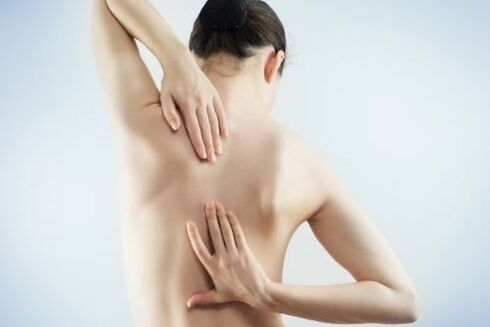
With osteochondrosis of the lumbar region, the pain most often occurs in the lower back, sacrum and lower limbs.The feelings of the duel can be intense in the movement, footage in the back and numbness of the legs are possible.Breaks in the functions of the organs of the genological systems are not excluded.
Among other things, the patient may have dysplastic osteochondrosis of the lumbar spine.This form of the disease is accompanied by the formation of the outgrowths of the vertebrae together with pathological deformities of the spine.
SO visceral syndrome may be observed in patients with osteochondrosis of the lumbar region.At the same time, pain in the affected area gives the internal organs and one may think that, for example, the kidneys are injured.
What does polysegmental osteochondrosis mean?
In pathology observed at once in several segments or covering the entire spine, the patient is diagnosed with polysegenic osteochondrosis.The affected segments can be placed directly close to one another, or through one or even in certain areas of the spine.Naturally, in such a situation, a complete special treatment is required, which should include not only taking tablets but also physiotherapy procedures.
Osteochondrosis and the causes of multi -segmental disease are a much more serious disease than it may seem at first glance.If no appropriate treatment is performed, this condition can lead to complete stillness of the back.The following photo shows how serious osteochondrosis can be.
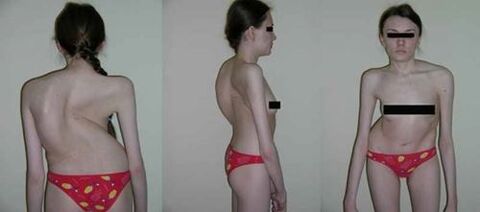
Osteochondrosis and vegetative-vascular dystonia (VSD)
Pathological degenerative processes can exist and progress for a long time until they have completely lost a person, the ability to move.Therefore, if you find at least one sign of osteochondrosis, go to the hospital immediately.
Because pathological deformities in the intervertebral discs are often accompanied by irritation of vegetative nodes, the disease can cause neurosis, as well as various disorders in the work of the cardiovascular system.In fact, one of these consequences is the vegeta-vascular dystonia.
The main features of VVD include:
- Unexpected pressure jumps;
- headache;
- vomiting nausea;
- insomnia;
- dyspnoea;
- sweating;
- A constant feeling of fatigue.
Sometimes in a severe VSD form can lose consciousness.
The onset of the above symptoms can be a consequence not only by damage to the spine, but also with impaired functioning of the endocrine and somatic systems.Therefore, only a specialist can make the right diagnosis and choose the right treatment after appropriate examinations.
Treatment of osteochondrosis
Treatment of degenerative processes at the back always implies a very long course of therapy based on the integrated use of various medicines and physiotherapy procedures.If you have neurosis with osteochondrosis, be sure to contact a neurologist.The choice of optimal techniques and medicines is only possible after a complete examination of the patient and various studies.
The doctor may prescribe a restrictive diet, the use of physiotherapy exercises, it is sometimes appropriate to use folk methods.However, all measures should be taken only by taking into account the actual condition of the patient, the presence of complications and concomitant diseases such as neurosis, VSD, high blood pressure, etc.
One of the basic conditions for the successful treatment of osteochondrosis is a sequence.With the exacerbation of the disease, of course, the first thing you will need to eliminate pain syndrome.In addition, work must be done to stop the destructive processes.

In the treatment of osteochondrosis, exercises for physiotherapy, massage (including self -massage), manual therapy, acupuncture, hydrotherapy and the like are used.As for the use of medicines, their main effect should be aimed at eliminating pain, recovery of cartilage and normalizing blood circulation in areas affected by the disease.
Patients are most commonly prescribed:
- drugs with analgesic effects (anti -inflammatory non -steroidal drugs);
- muscle relaxants;
- Local anesthesia agents (compresses, blockade, patch and the like);
- chondroprotectors;
- complexes of vitamins and minerals;
- vasodilating drugs;
- Medicines to normalize the processes of metabolism in the tissues.
Media physical education for osteochondrosis plays an exceptional role.Elected specifically for a particular patient, workouts will help him strengthen the muscles at the back, allow you to form a muscle corset to ensure a uniform distribution of back loads.Due to constant training, blood circulation in intervertebral discs will improve.One will straighten the posture and make his spine mobile.
There is also a special complex of respiratory exercises that allow you to relieve muscle spasm and pain syndrome.It is quite good to do swimming - it is able to unload the spine as much as possible.
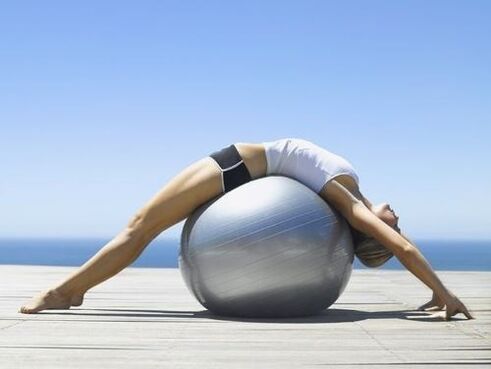
When performing exercise therapy, it is important to use special rehabilitation simulators.It is worth noting that any physical activity is contraindicated during the exacerbation of the disease.But during the remission period, they should necessarily supplement drug therapy.
Prevention of osteochondrosis
In order to prevent osteochondrosis, first, one must maximize the daily load on the back.You need it:
- Choose comfortable high quality shoes for socks;
- Avoid a long stay in an uncomfortable position, a stuck or standing position;
- Follow your weight;
- Control stand;
- Do not lift excess weight unnecessary;
- Participate in charging to strengthen the spinal muscles.
Osteochondrosis is a disease that has very serious consequences.And absolutely everything about osteochondrosis is impossible to know.

























